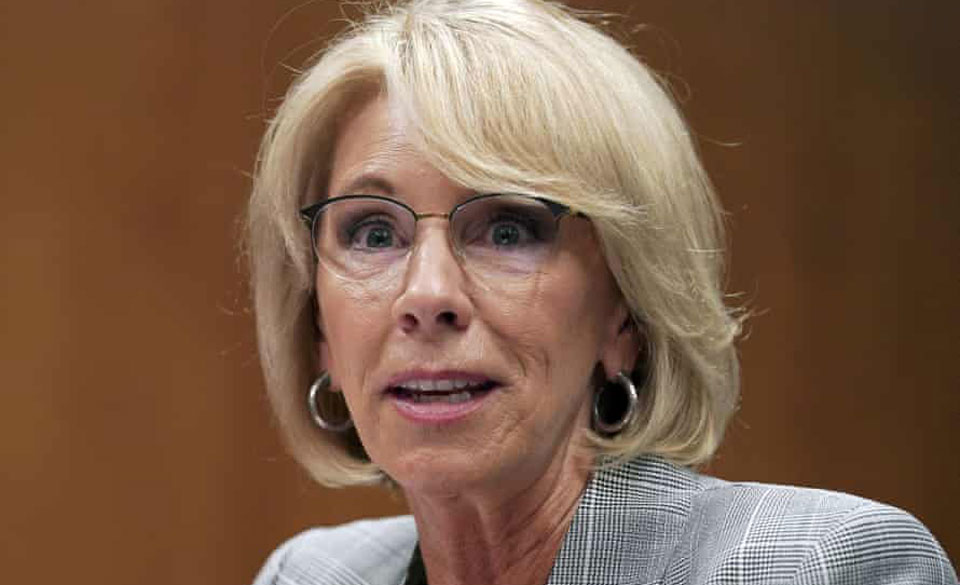
I fell for the charter school hype. I agreed with former President Obama’s education secretary Arne Duncan who advocated for “school choice.” I trusted the research that said charters “close [the] achievement gap” for Black and Latino students. When I saw “Waiting for ‘Superman,’” I rooted for the kids in the documentary to escape their failing public schools by snagging spots at charter schools. And though I encountered very few bad teachers in my four years teaching and 12 years learning at public schools, I never questioned why Time published stories about “Rotten Apple” teachers being swept out of classrooms by wealthy education “reformers.”
I believed the hype so much that in 2012, knowing almost nothing about charter schools and having no administrative experience, I joined a friend in submitting a half-baked petition to the Los Angeles Unified School District (LAUSD) with the intention of starting our own charter school. When LAUSD denied it, we presented it to the Culver City Unified School District, which also, rightfully, rejected it.
Still intrigued by charters, in 2016 I interviewed for an English teacher position with a woman I’ll call Ellen Peters, the principal and co-founder of Savior Academy, a charter school serving grades six through 12. (The names of the school, administrators, and students have been changed for this story.) Her assertion that the close bond between students and staff made it feel “like a family” inspired me to sign a non-union contract on the spot, though the school had recently lost its co-founder Cathy Reynolds (name changed), who stepped down from the board, and several teachers, who resigned.
But the chasm between the hype and reality became evident to me immediately upon starting work. There were high attrition rates of students and teachers. Over the summer, more than half the faculty resigned and were replaced by new teachers. About three-quarters of the students hadn’t returned either, and though new kids had registered, the enrollment wasn’t anywhere near what was needed in order to be fiscally stable, because funding was tied to enrollment. There were legal violations: The special education teacher had 43 students, though the law capped class sizes at 28. The overage made him fall behind on students’ individualized education plans (IEPs), making the school noncompliant on special education requirements.
It was clear to the new teachers, who were carrying heavy course loads and referred to getting through the workweek as “surviving,” that this was unacceptable. But what kept the indefatigable old-timers going was an upcoming election of the LAUSD Board of Education in 2017, in which charter school advocate Nick Melvoin was running to unseat charter school skeptic Steve Zimmer in District 4, which stretched from the Westside to the west San Fernando Valley. The election made headlines in the Los Angeles Times and HuffPost.
Board president Zimmer wasn’t Principal Peters’ favorite person. He’d rejected her petition for authorization of Savior Academy, which was later approved by the Los Angeles County Office of Education (LACOE). He also refused to give her space in her desired upscale Westside town, so the school was now in its third home, co-located with a public school in South Los Angeles. Peters and her loyal teachers were hoping that if Melvoin won, the pro-charter board majority would help them get permanent space on the Westside. Their bumper stickers and T-shirts were splashed with the campaign slogan “Kids First,” which referred to Melvoin’s promise to put the interests of children before those of the teachers’ union.
They weren’t the only ones flacking for Melvoin. Co-founder Cathy Reynolds’ son Matt, who was in my senior English class, was working on Melvoin’s campaign and writing about it in his college applications. Matt’s connection to Melvoin likely helped to distinguish him from other applicants, such as Indian immigrant Priyanka, who was his rival for valedictorian and also in my senior English class (the students’ names have been changed to protect their identity). It is possible that this gave him a leg up in the admissions process.
Growing suspicious, I started investigating Melvoin and uncovered a dark side behind the benevolent narrative of “Kids First” that was spun by his campaign and echoed by the leadership of our school.
Who controls the narrative?
I learned that billionaires fund local school board elections across America in order to accelerate charter school growth. In District 4 in Los Angeles, Steve Zimmer was financed by teachers’ unions while Nick Melvoin was reportedly bankrolled by California billionaires Eli Broad, Netflix co-founder Reed Hastings, and Gap clothing company co-founder Doris Fisher, as well as out-of-towners like former New York City Mayor Mike Bloomberg, Walmart heirs and siblings Jim and Alice Walton, and others in an expensive race.
The political arm of the California Charter Schools Association, CCSA Advocates, was active in trying to get Melvoin elected. As Capital and Main reported, “In a low-turnout election that set a new record as the most expensive school board contest in U.S. history, CCSA and charter philanthropists… outspent Zimmer on Melvoin’s behalf” by almost $4 million. While CCSA Advocates spent much of its billionaire-donated money directly, it also “funneled dollars” to astroturf groups like the Parent Teacher Alliance, a pro-charter organization that is not the Parent Teacher Association.
Furthermore, CCSA Advocates donated to an organization called Speak UP, which was a “strong opponent” of Zimmer, according to the Los Angeles Times, and whose co-founder and CEO Katie Braude resides in the Pacific Palisades, where the median home price is about $3.4 million. Braude helped launch the Palisades Charter School Complex, which sought to serve “all students in an ethnically and economically diverse student body,” according to her bio on the Speak UP website. But at Palisades Charter High School, “white students are 2.8 times as likely to be enrolled in at least one AP class as Black students,” while “Black students are 7 times as likely to be suspended as [w]hite students,” according to ProPublica. In 2016 and 2017, Black students were victims of hate crimes at Palisades Charter High School, and in 2020, a Black teacher sued the school for racial discrimination, wrongful termination, harassment, and “intentional infliction of emotional distress.” According to the Pacific Palisades Patch, Pamela Magee, the school’s executive director and principal, responded to the teacher’s allegations via email, “PCHS is an equal opportunity employer, and we take allegations of discrimination seriously.”
Among Speak UP’s volunteers was our co-founder Cathy Reynolds, mom of my student Matt who worked on Melvoin’s campaign. Speak UP gave her a platform on its blog to criticize Steve Zimmer’s alleged animosity toward our school. But as I learned more about him, I realized that Zimmer, a 16-year-veteran teacher who had attended public schools and was the son of educators, probably understood how to put “kids first” better than did Melvoin, who taught for two years, graduated from the exclusive Harvard-Westlake (alma mater of Jake Gyllenhaal and Lily Collins) and was the son of a TV writer/producer and a photojournalist.
Melvoin’s list of individual donations, according to the Los Angeles City Ethics Commission, is filled with some of the same moguls who donated to CCSA Advocates, such as Eli Broad and Reed Hastings. It also includes then-co-chairman of Walt Disney Studios Alan F. Horn, president of the Emerson Collective Laurene Powell Jobs, and Martha L. Karsh and her husband Bruce Karsh, who at the time of the election was the chair of the Tribune Media Company, which then owned the Los Angeles Times. (Bruce Karsh stepped down from the Tribune in October 2017, five months after the school board election.)
The billionaires who fund school board races across the country also finance education reporting. The Eli and Edythe Broad Foundation, which was partly behind a $490 million plan reported in 2015 to enroll half of LAUSD’s students in charters by 2023, funded the Los Angeles Times’ reporting initiative Education Matters with the Baxter Family Foundation and the Wasserman Foundation, which also support charters. The Bill and Melinda Gates Foundation and Amazon (whose founder and former CEO—now executive chairman—Jeff Bezos also owns the Washington Post) fund the Seattle Times’ Education Lab. The Bezos Family Foundation, the Gates Foundation, Bloomberg Philanthropies, and the Chan Zuckerberg Initiative, founded by Facebook’s Mark Zuckerberg and his wife Priscilla Chan, fund Chalkbeat. The Chan Zuckerberg Initiative, the Gates Foundation, and the Walton Family Foundation fund Education Week and The 74, which owns the LA School Report. The Gates Foundation finances the Solutions Journalism Network (SJN), whose “Fixes” column in the New York Times covers education and other issues. And Powell Jobs’ Emerson Collective owns the Atlantic, which has a robust education section.
Both news stories and opinion pieces in the aforementioned outlets are slanted toward the interests of funders. As Tim Schwab wrote in Columbia Journalism Review, SJN co-founders David Bornstein and Tina Rosenberg “have favorably profiled Gates-funded education, agriculture, and global health programs over the years” in their “Fixes” column in the New York Times “without disclosing that they work for an organization that receives millions of dollars from Gates.” Furthermore, the Seattle Times’ Education Lab, which is partnered with SJN, has published positive reporting on Gates’ charter school initiatives. The Atlantic published largely uncritical pieces about Success Academy Charter Schools CEO Eva Moskowitz and former education secretary, Arne Duncan, when he was promoting his book. The Los Angeles Times, meanwhile, published editorials calling for charter school expansion, and it endorsed Nick Melvoin not once but twice.
When it comes to honest reporting on charter schools, the mainstream media is set up to be an unreliable narrator.
Unhealthy competition
A month into the academic year at Savior Academy, we received an infusion of kids from City High School, a charter that closed abruptly because of under-enrollment. Although the Los Angeles Times reported the story, it didn’t mention the bigger issue: Most charters were under-enrolled, making it difficult for even the promising ones to stay open. Some charters had less than 20 percent of what was projected in their petitions, according to a 2016 article in Education Week. Eighty-two percent of “charter schools operating within LAUSD” were under-enrolled in 2019, according to LAUSD board member Scott Schmerelson, who posted this information on Facebook, and in 2020 the number rose to 85 percent. (Claims of waitlists in the billionaire-funded “Waiting for ‘Superman’” should be met with skepticism.)
In 2017, then-U.S. Education Secretary Betsy DeVos said that picking a school should be as easy as choosing to ride with Lyft, Uber, or a taxi. In Los Angeles, it is that easy, which creates chaos for students and teachers who bounce around from school to school. California, which the Washington Post’s Valerie Strauss once described as “the Wild West” of the charter sector, has more charters than any other state while LAUSD has more charters than any other district in the country. Charters drain about 12,000 students and nearly $600 million a year from LAUSD, so public schools are also under-enrolled.
Charter school activists have created two competing school systems battling for an advantage, and kids are the pawns. This was evident in our co-location with a public school in South Los Angeles. Because we were still under-enrolled, Principal Peters pressured teachers to recruit students. I declined, but a few others went along with it, enlisting some kids from neighboring schools. They also poached a couple of students from our co-located school, which was under-enrolled as well, along with the funding that followed them.
Charter Schools and Propaganda
While I found incisive reporting on charter school co-locations in the Huffington Post, I was disappointed to discover many more opinion pieces that were supportive of co-location, such as one in The 74 by its co-founder Campbell Brown, who accused New York City Mayor Bill de Blasio of engaging in “a bizarrely personal and destructive death match” because he denied co-locations to Success Academy Charter Schools. (Brown served on Success Academy’s board and called herself a “soldier in Success Academy CEO Eva Moskowitz’s army.” She now works for Facebook, which some consider a political propaganda machine because of its failure to vet political ads.)
In his 2015 book How Propaganda Works, Yale University philosophy professor Jason Stanley writes that propaganda deceives by appealing to emotions over reason, encouraging an “us” versus “them” mentality through negative stereotypes, and destroying “reasonableness” that depends on “norms of mutual respect and mutual accountability.” Because propaganda relies on false claims, distorted facts, and simplistic narratives, it thrives in a polarized environment, which education certainly is. Furthermore, public relations and propaganda are intimately linked.
Melvoin’s campaign slogan “Kids First,” the type of phrase that’s popular in “education reform” circles, implies that charter schools put children first while public schools put teachers first. But you can’t put kids first while putting teachers last and expect kids to be okay. According to a 2016 Pennsylvania State University research brief, “When teachers are highly stressed, children show lower levels of both social adjustment and academic performance.” At our charter school, the sixth-grade humanities teacher was laid off because the grade was under-enrolled, according to an email Principal Peters sent to families, and the overworked physics teacher missed many days of work due to the stress. It was clear to me that this affected some of our students, who were acting out and getting rampantly suspended. Even Priyanka, who had been tied for valedictorian with Matt, was now falling behind in her classes.
While “school choice” claims to “close [the] achievement gap,” charters serving a majority-minority population “are among the nation’s most segregated,” according to the Associated Press, and high levels of segregation are connected to wide gaps in educational achievement. As Howard University assistant professor Natalie Hopkinson wrote in HuffPost, school choice has led to white flight from public schools, threatening their survival, a problem at LAUSD and across the United States.
Learning more about Steve Zimmer, I realized he wasn’t the evil person a pro-charter political action committee called “LA Students 4 Change” portrayed him to be when they sent out mailers that were similar to the “iconic imagery from advertising for the Netflix series ‘Making a Murderer.’” Zimmer had actually done a lot for kids by increasing arts funding and authoring “the school board resolution in support of the Dream Act.” Conversely, Melvoin had participated in Vergara v. California and Reed v. California, which aimed to dismantle teacher tenure. While the lawsuits were initially successful, both were overturned on appeal.
But support for Melvoin was growing. Not only was he endorsed by former education secretary Arne Duncan and former California Senator Barbara Boxer, but even our teachers’ spouses were canvassing for him.
Principal Peters, meanwhile, continued placing demands on us that seemed to us absurd, and there was little recourse since we weren’t protected by a union. An old-timer confessed to me that teachers had tried unionizing, but Peters had shut them down. Some quit, while the ones who stayed appeared to have Stockholm Syndrome. The special education teacher told me that the stress caused by his illegal class size was making him sick. He soon quit. And Peters asked me to upload an AP syllabus to the College Board for a class I taught that was not AP. I was so worried about the situation at work that I suffered from panic attacks and eventually felt compelled to become a whistleblower.
When I spoke to Indra Ciccarelli and Dina Wilson at LACOE, they promised to investigate my claims. They also told me they’d received complaints from parents, including some of the same things in my whistleblower complaint to them, such as special education violations and rampant suspensions. One parent even filed a violation with the U.S. Department of Education’s Office for Civil Rights alleging discrimination against their child on the basis of disability and race, they told me. Ciccarelli and Wilson also said that they were in the process of deciding whether or not to renew the school’s charter for another five years and encouraged me to stay in touch with them.
They became my lifeline, as working at the school became unbearable. When I investigated the assistant principal’s son, who was in my seventh-grade English class, for bullying a classmate who had autism, the assistant principal filed a grievance against me. After she excoriated the new biology teacher for also butting heads with her son, he quit. The new calculus teacher also resigned, and a senior dropped out just short of graduating.
Melvoin seemed unaware of (or indifferent to) all of this when he visited us and smiled for pictures that he posted on Instagram. LACOE, on the other hand, proved to be an ally of the kids when it denied our school’s renewal petition, citing high suspension rates, failure to meet academic benchmarks, attrition rates, and other problems. When the Los Angeles Times and LA School Report covered the impending closure, the reporters didn’t speak to teachers who may have revealed the climate of terror at the school. But they did allow Peters to publicly blame Steve Zimmer for the school’s failure.
Nick Melvoin snagged the school board seat in May 2017, and Reynolds’ son Matt attended his induction ceremony. Matt also beat Priyanka for valedictorian and got accepted into more selective colleges than she did, which was heartbreaking to witness. The Reynolds family reaped the greatest benefits from the school without being held accountable for the carnage. While they may not have set out to do that, it’s how privilege works.
Will Charter Schools Become Demystified?
Teachers’ voices are largely missing from the media’s narrative on charter schools because they fear retribution by vengeful employers and condescending politicians and reporters. Because teachers are likely to expose the corruption and threaten the status quo, they are silenced.
Cambridge College education professor James Horn found only two teachers out of more than two dozen who agreed to use their names when he interviewed them for his book about KIPP charters, Work Hard, Be Hard: Journeys Through ‘No Excuses’ Teaching. One of them was Jessica Marks, who described the abuse of teachers who didn’t show total compliance to KIPP’s “family,” leading her to have a nervous breakdown (she wasn’t the only one at the school where she worked to whom this happened). Instead of praising her courage in speaking out, Washington Post columnist Jay Mathews doubted the veracity of her story.
(Mathews wrote the KIPP-exalting bestseller Work Hard, Be Nice: How Two Inspired Teachers Created the Most Promising Schools in America. Perhaps that’s why he maligned Horn’s book, which challenges harsh discipline policies that include making kids “earn” their desks by sitting on the floor to do their work.)
Unable to remain silent about my experiences at Savior Academy, I wrote an exposé and pitched it to outlets for eight months before mega-producer Shonda Rhimes’ Shondaland bought and published “The Truth About Charter Schools.” It went viral. Soon after, two major publishers released the charter-lauding books How the Other Half Learns by Robert Pondiscio and Charter Schools and Their Enemies by Thomas Sowell. But major publishers have yet to publish a charter school exposé that I know of. Horn’s book was released by the independent Rowman & Littlefield, which doesn’t have a lot of marketing dollars. Maybe that’s why the book didn’t get the attention it deserved, though Jay Mathews’ attack probably didn’t help.
The good news is that stories that are critical of charter schools are seeping into mainstream media. The New York Daily News covered former students, teachers, and parents at Success Academy using social media to expose stories of racism in the wake of George Floyd’s killing last year, including a white assistant principal erecting a bulletin board of effigies of Black bodies hanging upside down from a tree. The New York Times revealed that charter schools tapped pandemic relief funds meant for small businesses (after the Network for Public Education reported it first). And, when the funding for Education Matters at the Los Angeles Times ran out in 2017, the Times published a series on charter school fraud, including how a couple made millions by working loose laws.
Though billionaires keep pouring money into local school board elections, including last year’s in Los Angeles, charter school expansion is slowing down, according to a 2019 report by the Broad and Walton-funded Bellwether Education Partners. While the report cited facility challenges and waning public support among the reasons, it didn’t mention the recent Red for Ed teacher strikes, which called for a moratorium on new charters. Accompanying the strikes was a more positive depiction of teachers in the media: Time did an empathetic cover story on educators working multiple jobs to make ends meet, a departure from its previous stories about bad teachers.
A lasting change in the media’s depiction of teachers would signal a turning tide in how it reports on charter schools. Perhaps now that Joe Biden, who during his campaign promised to increase charter school “accountability,” has become president; public school supporter Dr. Jill Biden has become first lady, and Dr. Miguel Cardona has replaced Betsy DeVos as education secretary, the propaganda machine will lose steam. Maybe we’ll even see books and movies that expose charter school corruption, which could help enact policies to preserve the vital democratic institution of public school.
This article was produced by Our Schools.

MOST POPULAR TODAY

High Court essentially bans demonstrations, freedom of assembly in Deep South

UN warns that Israel is still blocking humanitarian aid to Gaza


Resource wars rage in eastern Congo, but U.S. capitalism only sees investment opportunity

U.S. imperialism’s ‘ironclad’ support for Israel increases fascist danger at home






Comments